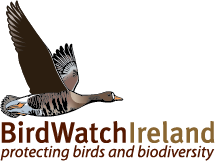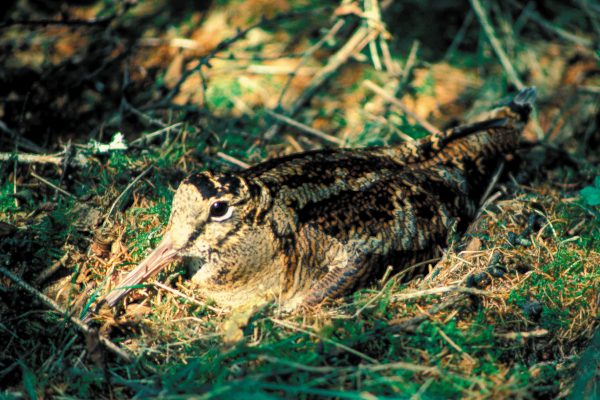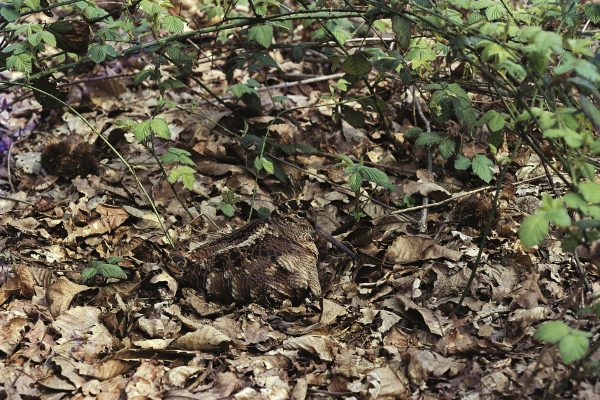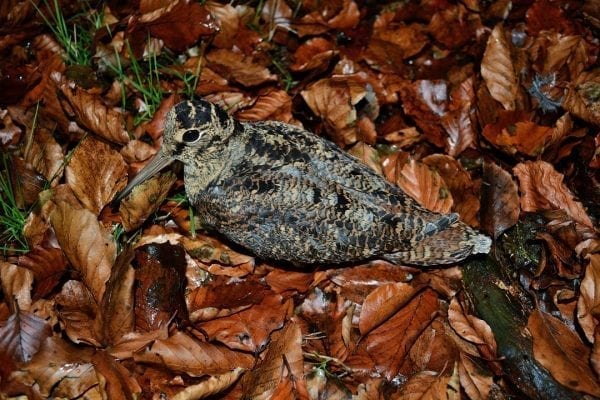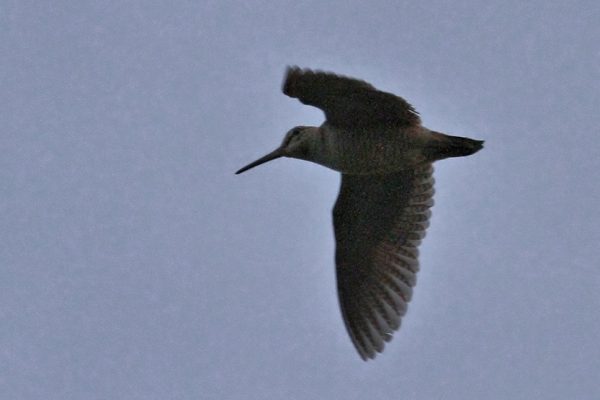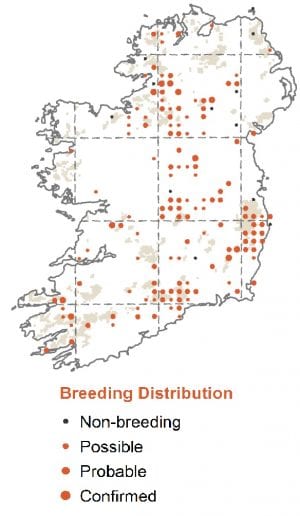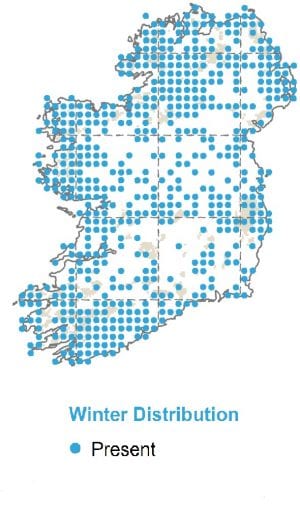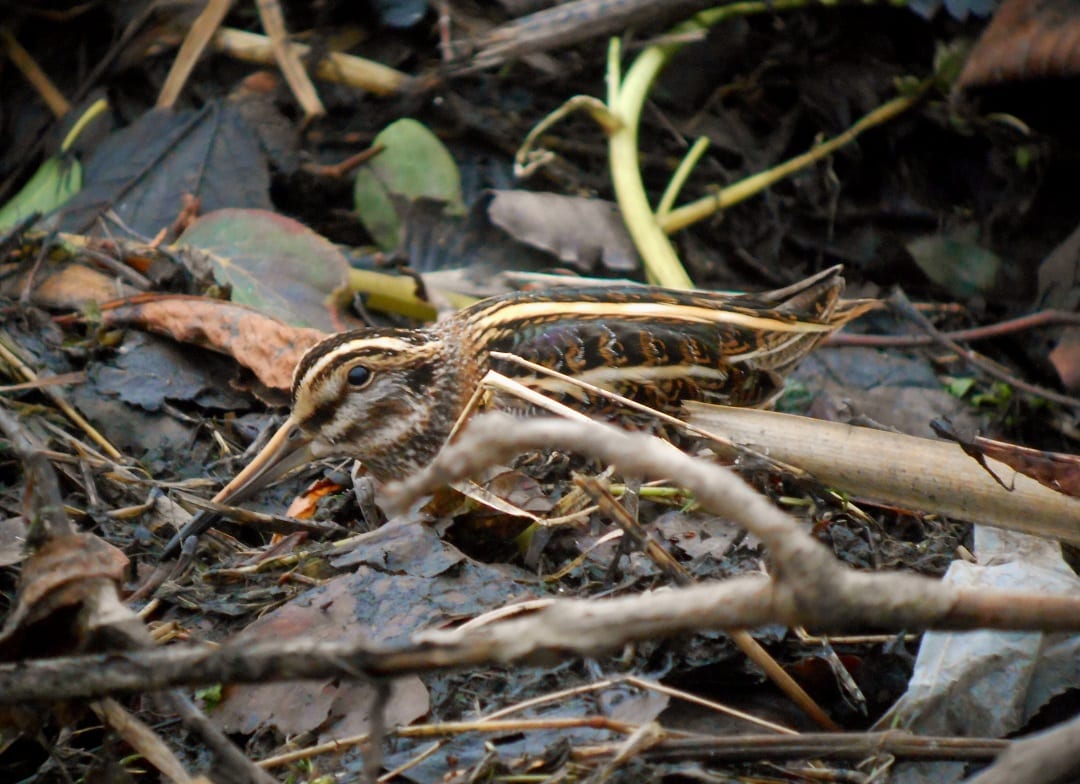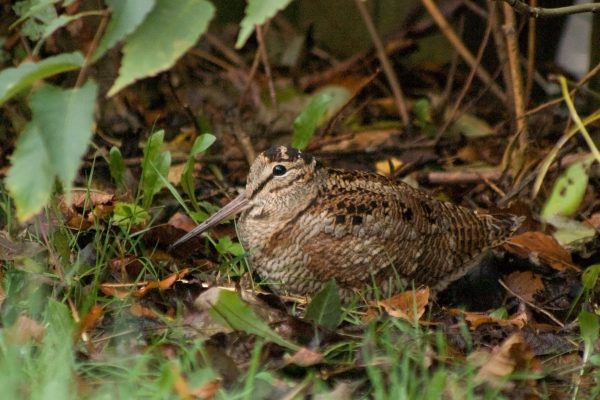
Woodcock
| Irish Name: | Creabhar |
| Scientific name: | Scolopax rusticola |
| Bird Family: | Waders |
red
Conservation status
Conservation status
Status
Resident & winter visitor from Scandinavia and Russia. Red-listed in Ireland, due to a decline in the breeding population. The European population has been evaluated as Declining, due to a moderate recent decline
Identification
With its long straight bill and plump body, it resembles a large Snipe. It is rarely seen on the ground, due to its secretive nature and cryptic plumage (which mimics dead leaves) and spends most of its day hidden amongst vegetation on the woodland floor. The best way to see a Woodcock is to wait at a good vantage point on a forest track or firebreak at dusk during spring or early summer. Listen for the call, then watch for the bird to appear, performing a strange fluttering display flight over the tree tops. This activity is known as roding. In flight, Woodcock have a heavy-chested appearance and rather rounded wings.
Voice
In breeding season, 3-4 grunted notes followed by a high-pitched, short, explosive 'pissp' sound made by the roding male at dusk and dawn, as they fly above the trees.
Diet
Feed predominantly on earthworms, at night.
Breeding
Nests on the ground in forests and woodland, usually well camouflaged amongst dead leaves and low vegetation. Young leave the nest soon after hatching.
Wintering
Wider distribution in winter, occurring in woodland, also scrub and some open areas (bracken and heather-covered hills).
Blog posts about this bird
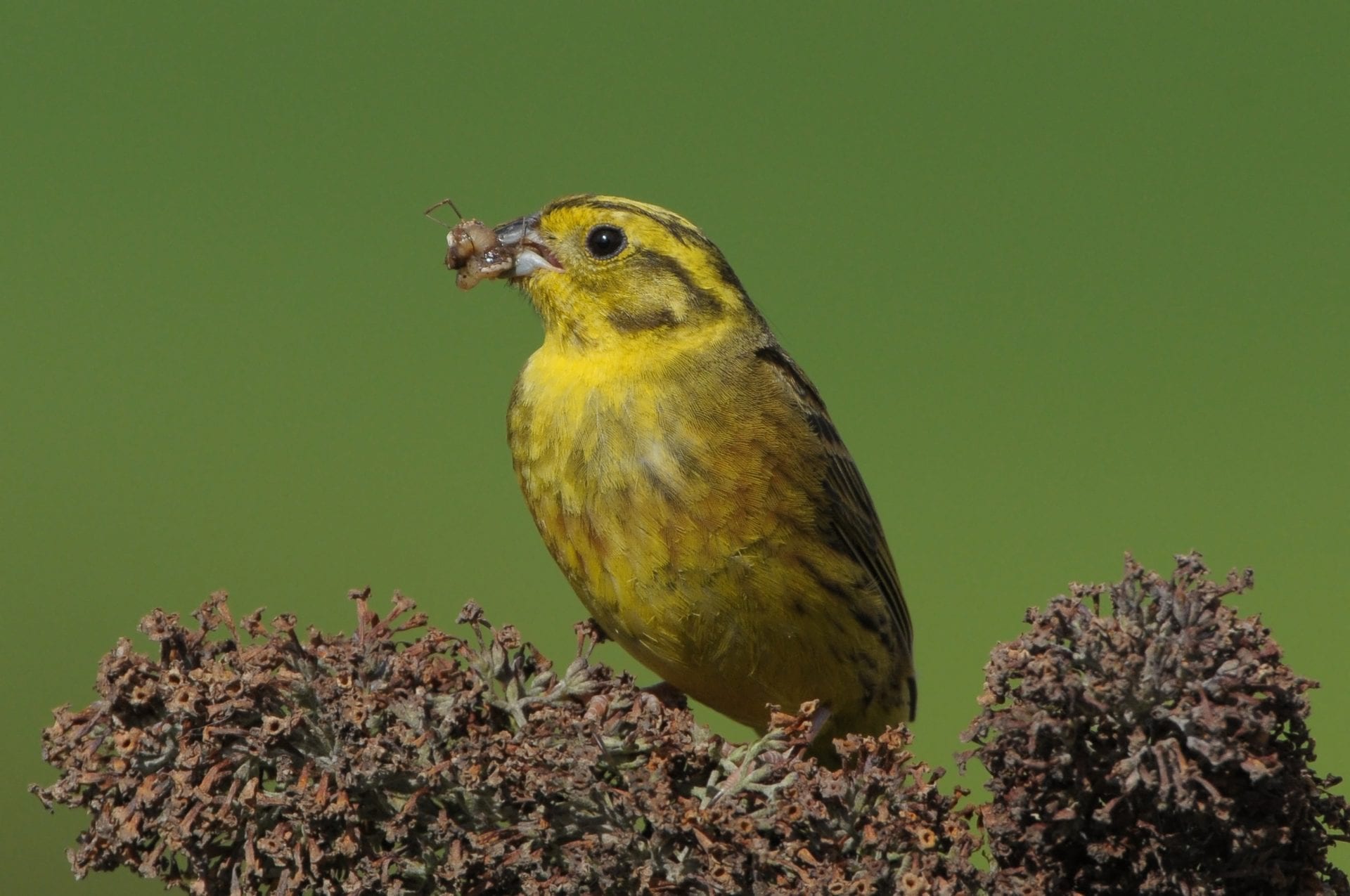
BirdWatch Ireland welcomes State purchase of Dowth Estate and establishment of Ireland's seventh National Park
BirdWatch Ireland welcomes the news of the State’s purchase of Dowth Hall demesne in County Meath and the establishment of the 500-acre property as a new National Park.
On Friday, Minister for Housing, Local Government and Heritage, Darragh O Brien TD confirmed the State’s purchase of the World Heritage lands of Dowth Hall and demesne, along with the establishment of a new National Park – the Boyne Valley (Brú na Bóinne) National Park.
A cultural and natural heritage site of national and international importance, the demesne includes Dowth Hall, an eighteenth-century neoclassical country house, and Netterville Manor, a late Victorian almshouse. The lands amount to approximately one-third of the total area of the UNESCO World Heritage Property of Brú na Bóinne, which includes the great Neolithic passage tombs of Newgrange, Knowth and Dowth.
The purchase paves the way for the establishment Ireland’s seventh National Park. It is the second National Park to be established in the east of the country alongside Wicklow Mountains National Park.


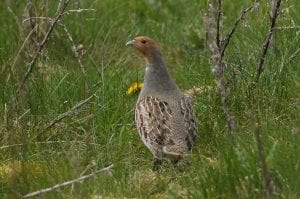
Grey Partridge. Photo: Colum Clarke.
Dowth has been actively managed by Devenish Nutrition over the last decade to preserve its cultural heritage and biodiversity. As well as their position within the Brú na Bóinne World Heritage Property, the Dowth lands are important places for nature. They host a wide range of habitats, including species-rich grasslands, native woodlands and mature hedgerows. The Boyne River which runs through the lands is designated as a Special Area of Conservation (SAC) under the Habitats Directive, and as a Special Protection Area (SPA) under the Birds Directive. Following the State purchase, the National Parks and Wildlife Service (NPWS) will maintain the careful management of the farmlands, habitats and species to date and will work to protect and improve it even further. The new Boyne Valley (Brú na Bóinne) National Park is rich in bird life. 54 species of birds have been recorded at the site including Red-listed species of conservation concern such as Grey Partridge, Woodcock, Kestrel, Swift and Yellowhammer. 19 species recorded at the site are on the Amber list, including Kingfisher, Common Sandpiper, Cormorant and Little Grebe. Dowth is also a haven for other wildlife and plants. The River Boyne is of national importance for a number of species of bat including Common Pipistrelle, Soprano Pipistrelle, Natterer's Bat, Brown Long-eared Bat, Leisler’s Bat, Whiskered Bat, Daubenton’s bat and Nathusius’ Pipistrelle. It also hosts many species of butterfly including Small Tortoiseshell, Ringlet, Holly Blue, Peacock, Meadow Brown, Speckled Wood, Large White, Green-veined White, Small White, Red Admiral and Painted Lady. While surveys have not been completed, it is likely that a large population of macro-moths (of which there are over 800 species) occur within managed habitats. Seven species of bee have also been recorded here including White-tailed Bumblebee, Honey Bee, Common Carder Bee, Garden Bumblebee, Early Bumblebee, Red-tailed Bumblebee and Buff-tailed Bumblebee.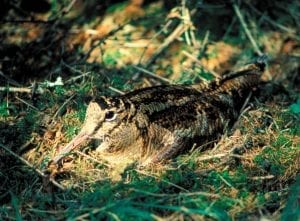
Woodcock on the nest. Photo: Richard T Mills
Minister for Housing, Local Government and Heritage, Darragh O’Brien TD welcomed the significant purchase and highlighted the many opportunities it could bring. “Rarely does the State get an opportunity to acquire lands of such significance. This landscape and property is of exceptional heritage importance. Here in this one place, we have over 5000 years of recorded history. In our care, it will significantly enhance our management of the Brú na Bóinne World Heritage landscape. We will conserve and protect Dowth’s heritage in line with our obligations to UNESCO and we will enhance responsible tourism, ensuring it becomes a standout destination. This purchase opens up possibilities for us to develop heritage partnerships, protect remarkable heritage and make it accessible. It is simply an outstanding opportunity for an outstanding place.” Minister of State with responsibility for Heritage and Electoral Reform, Malcolm Noonan TD said that the purchase represented an “outstanding addition to Ireland’s family of National Parks”. “We look forward to sustaining and growing this legacy to ensure that farming, nature and the cultural heritage of this ancient landscape can continue in harmony, as they have done since our ancestors first settled in the Boyne Valley over 5,500 years ago. Through our partnerships with state agencies, departments, local authorities and communities – which are enshrined in Heritage Ireland 2030, our national heritage plan – we are committed to nurturing Dowth as a key pillar of Ireland’s remarkable heritage that we can all admire, be proud of and enjoy.” The National Parks and Wildlife Service (NPWS), the National Monuments Service and the Office of Public Works (OPW) will now work together to deliver a Masterplan for the property that allows for the protection, presentation and management of this area of the Boyne Valley. Management of Dowth Hall and lands will form part of the existing Brú na Bóinne Management Plan and strengthen the vision for the protection of Dowth’s remarkable heritage, including the Neolithic passage tomb discovered in 2017 under Dowth Hall itself. “The work begins now of developing a Masterplan for Dowth. We will approach this with a keen sense of responsibility, ambition and excitement, knowing that this is a remarkable opportunity for Ireland’s heritage to play a lead role in the regional economy and in place-making for the east of the country,” said Niall O Donnchu, Director General of National Parks and Wildlife Service. “This new National Park is a special place where history, heritage, nature and culture collide. We will work with stakeholders in developing a Masterplan that will deliver on its full potential for locals, visitors and generations to come. I want to pay tribute to our team across the National Parks and Wildlife Service and the National Monuments Services for their work on this acquisition, and on their readiness to take over custodianship of this remarkable place from Devenish who have championed and maintained it with such care over the last 16 years.”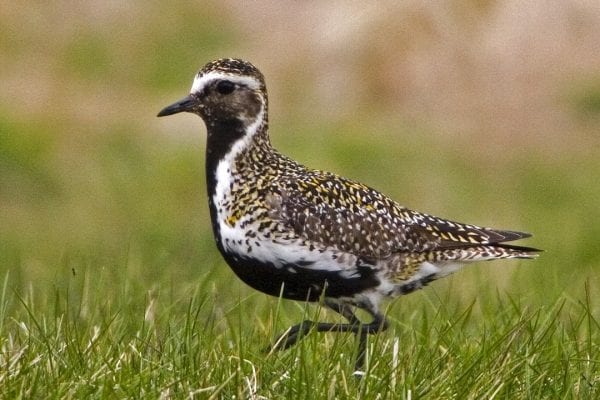
BirdWatch Ireland expresses disappointment at outcome of Open Seasons Order review
BirdWatch Ireland acknowledges publication of changes to the Open Seasons Order by Minister Noonan for the coming season.
The removal of four duck species – Scaup, Pochard, Goldeneye and Pintail – due to severe declines in their populations shows some progress by the Minister to address the vulnerable status of these species. However, BirdWatch Ireland is disappointed that two additional species that we recommended for removal – Shoveler and Golden Plover – remain on the list though the science clearly shows declines in those populations also.
No rationale has been provided as to why these species remain on the list. The information provided announcing the decision is inadequate and lacking detail. The most severe impacts to waterbirds and wading birds that are on the Open Seasons Order relate to habitat loss and degradation, pollution, disturbance and climate change. However, every pressure and threat must be addressed considering the dire conservation status of many of the species that are huntable in Ireland. We hope that hunting organisations will support this decision and we also hope that government will assist hunting organisations to be able to contribute to data collection in Ireland.
Earlier this year, BirdWatch Ireland called for six of the 21 bird species currently permitted to be hunted under the Open Seasons Order to be removed from the list, a suggestion underpinned by the robust scientific evidence of their ongoing declines in Ireland. We also urged for more analysis to be undertaken by the National Parks and Wildlife Service (NPWS) to determine how best to proceed in relation to nine of the other species listed. These proposals were some of many made as part of our submission to the public consultation on the review of the Open Seasons Order for Birds.
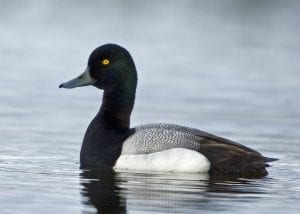 Launched on March 22 by Minister of State for Heritage and Electoral Reform, Malcolm Noonan, this consultation was aimed at gathering views to ensure that the hunting of the listed species was sustainable and in line with Ireland’s obligations under EU legislation. It also offered an opportunity to put forward other suggestions in relation to improving data collection and protecting vulnerable bird species in Ireland. In the submission, BirdWatch Ireland stated that Shoveler, Scaup, Pochard, Goldeneye, Golden Plover and Pintail should be removed from the list of species permitted for hunting. Of these species, five are Red-listed species on the Birds of Conservation Concern Ireland (BOCCI) list, while one – the Pintail – is an Amber-listed species. Indeed, data from BirdWatch Ireland’s Irish Wetland Bird Survey (I-WeBS) – one of Ireland’s longest-running wildlife monitoring programmes – has shown steep short- and long-term declines in the populations of these species. According to the latest I-WeBS data, which is collected in a standardised manner and analysed using best practice methods developed by international scientists, the Republic of Ireland population of Pochard is estimated to number 4,729 individuals, with estimates for the other species even lower – Shoveler (1,865), Goldeneye (1256), Pintail (1,017) and Scaup (167).
BirdWatch Ireland has also called for further analysis to be undertaken by the NPWS in relation to nine of the other species listed – Tufted Duck, Snipe, Mallard, Woodcock, Teal, Gadwall, Red Grouse, Wigeon and Jack Snipe. Of these species, three are currently Red-listed (Snipe, Woodcock, Red Grouse), with five Amber-listed (Tufted Duck, Mallard, Teal, Gadwall, Wigeon) and one Green-listed (Jack Snipe). Declining populations as underpinned by IWeBS data coupled with a number of data gaps give serious cause for concern for these species. BirdWatch Ireland called for the NPWS to carry out additional analysis of the data for these species across their wintering and breeding populations and range, in order to inform the best next steps to take for them.
In addition to the suggested changes to the Open Seasons Order Species list, BirdWatch Ireland made a number of other suggestions in its submission. It is calling for the Open Seasons Order to be reviewed more regularly, particularly in light of the ongoing threat of Highly Pathogenic Avian Influenza (HPAI) and the rapid negative change that could occur in a population as a result of an outbreak.
Supporting hunting organisations in the collection of data, extending the network of wildfowl sanctuaries, implementing a more regional- and county-based approach for certain species and addressing the issue of disturbance at important wetland sites are some of the other suggestions put forward by BirdWatch Ireland.
Launched on March 22 by Minister of State for Heritage and Electoral Reform, Malcolm Noonan, this consultation was aimed at gathering views to ensure that the hunting of the listed species was sustainable and in line with Ireland’s obligations under EU legislation. It also offered an opportunity to put forward other suggestions in relation to improving data collection and protecting vulnerable bird species in Ireland. In the submission, BirdWatch Ireland stated that Shoveler, Scaup, Pochard, Goldeneye, Golden Plover and Pintail should be removed from the list of species permitted for hunting. Of these species, five are Red-listed species on the Birds of Conservation Concern Ireland (BOCCI) list, while one – the Pintail – is an Amber-listed species. Indeed, data from BirdWatch Ireland’s Irish Wetland Bird Survey (I-WeBS) – one of Ireland’s longest-running wildlife monitoring programmes – has shown steep short- and long-term declines in the populations of these species. According to the latest I-WeBS data, which is collected in a standardised manner and analysed using best practice methods developed by international scientists, the Republic of Ireland population of Pochard is estimated to number 4,729 individuals, with estimates for the other species even lower – Shoveler (1,865), Goldeneye (1256), Pintail (1,017) and Scaup (167).
BirdWatch Ireland has also called for further analysis to be undertaken by the NPWS in relation to nine of the other species listed – Tufted Duck, Snipe, Mallard, Woodcock, Teal, Gadwall, Red Grouse, Wigeon and Jack Snipe. Of these species, three are currently Red-listed (Snipe, Woodcock, Red Grouse), with five Amber-listed (Tufted Duck, Mallard, Teal, Gadwall, Wigeon) and one Green-listed (Jack Snipe). Declining populations as underpinned by IWeBS data coupled with a number of data gaps give serious cause for concern for these species. BirdWatch Ireland called for the NPWS to carry out additional analysis of the data for these species across their wintering and breeding populations and range, in order to inform the best next steps to take for them.
In addition to the suggested changes to the Open Seasons Order Species list, BirdWatch Ireland made a number of other suggestions in its submission. It is calling for the Open Seasons Order to be reviewed more regularly, particularly in light of the ongoing threat of Highly Pathogenic Avian Influenza (HPAI) and the rapid negative change that could occur in a population as a result of an outbreak.
Supporting hunting organisations in the collection of data, extending the network of wildfowl sanctuaries, implementing a more regional- and county-based approach for certain species and addressing the issue of disturbance at important wetland sites are some of the other suggestions put forward by BirdWatch Ireland.
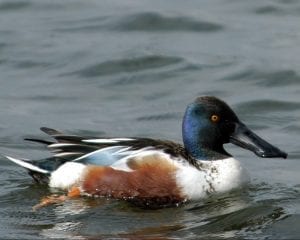 Throughout the submission, BirdWatch Ireland noted the Irish Government’s ongoing failure comprehensively to address the conservation of wild bird species and its poor track record in upholding its environmental commitments under EU law. This is despite Dáil Éireann’s declaration of a climate and biodiversity emergency in 2019, and the well-established fact that Ireland’s wild birds are faring worse than ever. Indeed, BirdWatch Ireland’s Birds of Conservation Concern in Ireland assessment in 2021 showed that 63 per cent of Ireland’s regularly occurring species are Red or Amber listed birds of conservation concern.
All birds, including Red and Amber-listed species, are facing numerous human-induced pressures and it is vital that the individual and cumulative impacts of these pressures are addressed.
If the State wishes to have any chance of reversing populations declines, it urgently needs to enforce environmental legislation, as well as ensure sectoral policies such as agriculture, afforestation, renewable energy and peatlands have conservation of bird species integrated firmly in their plans and processes.
Throughout the submission, BirdWatch Ireland noted the Irish Government’s ongoing failure comprehensively to address the conservation of wild bird species and its poor track record in upholding its environmental commitments under EU law. This is despite Dáil Éireann’s declaration of a climate and biodiversity emergency in 2019, and the well-established fact that Ireland’s wild birds are faring worse than ever. Indeed, BirdWatch Ireland’s Birds of Conservation Concern in Ireland assessment in 2021 showed that 63 per cent of Ireland’s regularly occurring species are Red or Amber listed birds of conservation concern.
All birds, including Red and Amber-listed species, are facing numerous human-induced pressures and it is vital that the individual and cumulative impacts of these pressures are addressed.
If the State wishes to have any chance of reversing populations declines, it urgently needs to enforce environmental legislation, as well as ensure sectoral policies such as agriculture, afforestation, renewable energy and peatlands have conservation of bird species integrated firmly in their plans and processes.